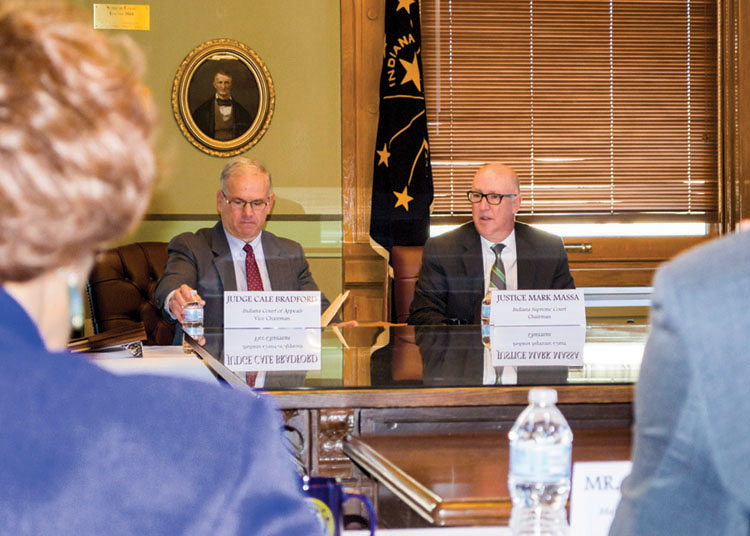
By Hon. Mark S. Massa, Indiana Supreme Court & Hon. Cale J. Bradford, Indiana Court Of Appeals
A busy year awaits the newly created Marion County Judicial Selection Committee (MCJSC). Pursuant to 2017 legislation, the state’s largest county now joins Allen, Lake, and St. Joseph counties in using merit selection to identify candidates for gubernatorial appointment to the local Superior Court.
Here’s how we got here, and how it will work:
An aberration from traditional voting results in the 1974 post-Watergate elections led to a compromise between the two major political parties in a subsequent legislative session, dividing the Marion Superior Court, first with rough equivalence, and then (after 2005) with absolute equal partisan balance.
For the past 40 years, judicial candidates of both parties were “slated” at the winter county political conventions by delegates comprised of precinct committeeman and party leaders.
Those not slated could “run against the slate” in the May primary, and on rare occasions, non-slated candidates secured a spot on the fall ballot. If you survived the primary (whether “slated” or not), your “election” in the fall was virtually assured. Terms were for six years and incumbents sought re-slating in election years to stay in office.
When federal courts declared the slating system unconstitutional, the General Assembly responded by creating the MCJSC, chaired by an Indiana Supreme Court Justice, with a Court of Appeals Judge as vice-chair, and 12 other members representing a diverse and bipartisan cross-section of the community, the bar, and its various constituencies (including civil and criminal, plaintiffs and defense).
Diversity on the bench is explicitly listed in the legislation as part of the Committee’s charge; five of the 14 members are African-American, six are women.
The new legislation maintains the partisan balance on the Marion Superior Court. Judges will no longer run in elections but will stand for retention at the end of their terms, much like appellate judges.
The MCJSC has been given two separate but equally important tasks. First, it is to interview all incumbents who wish to stand for retention (as many as 16 in 2018, as many as 20 in 2020) and make a public recommendation to be disseminated via website. The process for 2018 will begin in March.
Secondly, when vacancies occur on the Superior Court, the MCJSC is to conduct public interviews of candidates and submit a list of three finalists from which the Governor must make the appointment.
Three incumbents have decided to not seek retention in November, so the MCJSC will have to attend to both of its primary responsibilities in its inaugural year, with the Governor making his appointments in time for the new judges to take office on January 1, 2019.
Finally, cooperation within the Committee is encouraged by the requirement of nine votes before an incumbent is recommended or applicant placed on final panel. We look forward to leading the MCJSC and playing some small role in maintaining a tradition of excellence in the Marion Superior Court.